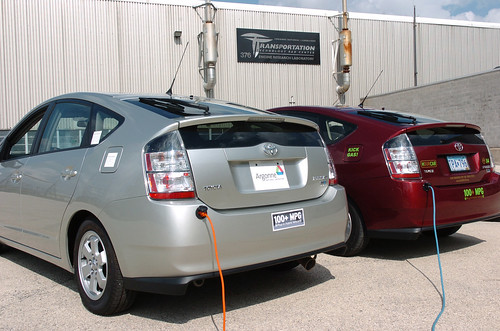(Source: Government Accontability Office)

Ribbon Cutting Ceremony
The New Starts program is an important source of new capital investment in mass transportation. As required by the Safe, Accountable, Flexible, Efficient Transportation Equity Act: A Legacy for Users, the Federal Transit Administration (FTA) must prioritize transit projects for funding by evaluating, rating, and recommending projects on the basis of specific financial commitment and project justification criteria, such as cost-effectiveness, economic development effects, land use, and environmental benefits. To be eligible for federal funding, a project must advance through the different project development phases of the New Starts program, including alternatives analysis, preliminary engineering, and final design. Using the statutorily identified criteria, FTA evaluates projects as a condition for advancement into each project development phase of the program.
This testimony discusses the:
(1) key challenges associated with the New Starts program and
(2) options that could help expedite project development in the New Starts program.
This testimony is based on GAO’s extensive body of work on the New Starts program and ongoing work–as directed by Congress. For this work, GAO reviewed FTA documents and interviewed FTA officials, sponsors of New Starts projects, and representatives from industry associations. The FTA reviewed the information in this testimony and provided technical comments.
Previous GAO work has identified three key challenges associated with the New Starts program. First, frequent changes to the New Starts program have sometimes led to confusion and delays. Numerous changes have been made to the New Starts Program over the last decade, such as revising and adding new evaluation criteria and requiring project sponsors to collect new data and complete new analyses. Although FTA officials told GAO that changes were generally intended to make the process more rigorous, systematic, and transparent, project sponsors said the frequent changes sometimes caused confusion and rework, resulting in delays in advancing projects.
Second, the current New Starts evaluation process measures do not capture all project benefits. For example, FTA’s cost-effectiveness measure does not account for highway travel time savings and may not capture all economic development benefits. FTA officials have acknowledged these limitations, but noted that improvements in local travel models are needed to resolve some of these issues. FTA is also conducting research on ways to improve certain evaluation measures.
Third, striking the appropriate balance between maintaining a robust evaluation and minimizing a complex process is challenging. Experts and some project sponsors GAO spoke with generally support FTA’s quantitatively rigorous process for evaluating proposed transit projects but are concerned that the process has become too burdensome and complex.
In response to such concerns, FTA has tried to simplify the evaluation process in several ways, including hiring a consulting firm to identify opportunities to streamline or simplify the process. As part of ongoing work, GAO has preliminarily identified options to help expedite project development within the New Starts program. These options include tailoring the New Starts evaluation process to risks posed by the projects, using letters of intent more frequently, and applying regulatory and administrative changes only to future projects.
While each option could help expedite project development in the New Starts process, each option has advantages and disadvantages to consider. For example, by signaling early federal support of projects, letters of intent and early systems work agreements could help project sponsors use potentially less costly and time-consuming alternative project delivery methods, such as design-build. However, such early support poses some risk, as projects may stumble in later project development phases. Furthermore, some options, like combining one or more statutorily required project development phases, would require legislative action.
Click here to download the entire report.










